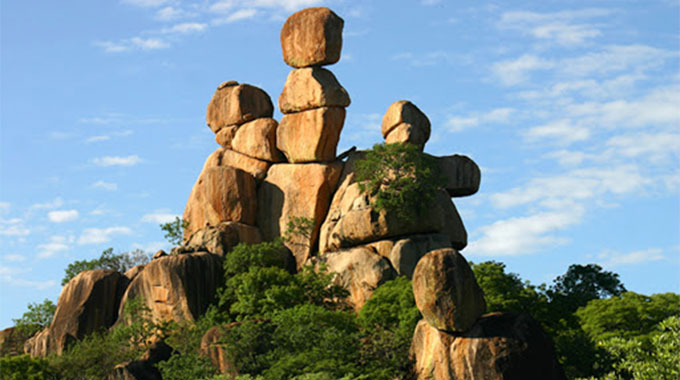
The Sunday News

Pathisa Nyathi
We are now in a position where we can deal with the preliminary work on the symbolism behind the rain dances associated with the Njelele Shrine and other related shrines found mostly within the Matobo Hills. The two dances are hoso (amabhiza) and wosana. At the time when the Njelele shrine is open to supplicants, in August-September, the two dances were performed.
Supplicants came from different parts of the country. They arrived at different times of the open period.
They all headed for the shrine keeper’s homestead not far from the shrine. They will have brought with them various gifts that they presented at the shrine. Wild dancing ensued at the homestead while groups that arrived earlier proceeded up the hill to the shrine. There, more dancing took place. The various local groups performed the woso dance, which precedes the wosana.
Both dances are drum-based. In the hoso dance, the three drums have Kalanga names. Indeed, the dances associated with rain-making are of Kalanga origin. The big drum, which is played first and provides the timeline, is called tjamabhika (literally, what you have cooked). The basis for the name has been lost over time. But noting that the dance is about rain-making, which guarantees good agriculture, the resulting grain is cooked as staple for the people in question.
The next drum, the medium-sized one is called shangana neshumba (meet the lion). The senior spirits of the land are the humba/mondolo. Perhaps this is a reference to them. The third and last drum, the smallest of them all is called dukumo.
Among the BaNyubi within the Matobo Hills, the drum is generally referred to as mandobo (see Nyathi and Chikomo: 2012).
In this article, our concern is not the technical side of musical production. Rather, our emphasis is on the underlying symbolism that is invoked to cause rain to fall. It is within this realm that beliefs and the worldview of the people are found. It is to these that we now turn.
Woso dancers are males. They have distinctive kilts that they put on. What will be clear in their costumes is the absence of the colour red. As explained in an earlier article, red is associated with death, which is the antithesis of life ,which lies at the heart of the Njelele concept.
Red is the colour associated with war, where blood is spilled. To the contrary, Njelele is associated with peace, life and regeneration. Death goes against regeneration and the continuity of life. It is no wonder therefore, that the colour red is taboo during the rain-making ceremonies.
Even when the rains fall, the red colour is concealed as it is thought to attract lightning. When one is struck by lightning, their life is either threatened or terminated. Either way, the colour red is associated with the termination of life – just the opposite of what Njelele stands for.
The male dancers, in addition to their kilts, put on characteristic head dresses comprising ostrich feathers, black and white, with the two long ostrich feathers resembling horn formations. The two are white in colour. Each dancer holds in one hand a hand rattle made from a hollowed-out gourd, into which seeds or stone pebbles are added. A handle is provided.
In the other hand, a dancer holds a fly whisk usually of a horse or wildebeest. Invariably, its colour was black, making it align with the Njelele colour scheme that of black.
The rest of the people form a circle, with the central space forming the arena or stage where the dancers showcase their dancing prowess. It should be pointed out that the dancers from time to time, at different times, join the circle. Only some of them do this while the rest will still be on the stage. This is in line with the characteristic unity that is cherished within the community.
The persons forming the circle are either singing, clapping or lurching themselves into the arena, to cheer on the male dancers. Some will be ululating wildly. The drummers decide when to push the dance to a higher level till it reaches the crescendo. The dancers advance in an artistic manner as they charge towards the drummers.
It is within this complex ensemble that symbolism and its related manipulation is played out, a symbolism that is associated with rain formation, as understood within the context of the worldview of the people in question. Natural phenomena are understood differently by different communities. What may be touted as scientific explanations and interpretation may be nothing more than humbug in a different community and vice versa.



